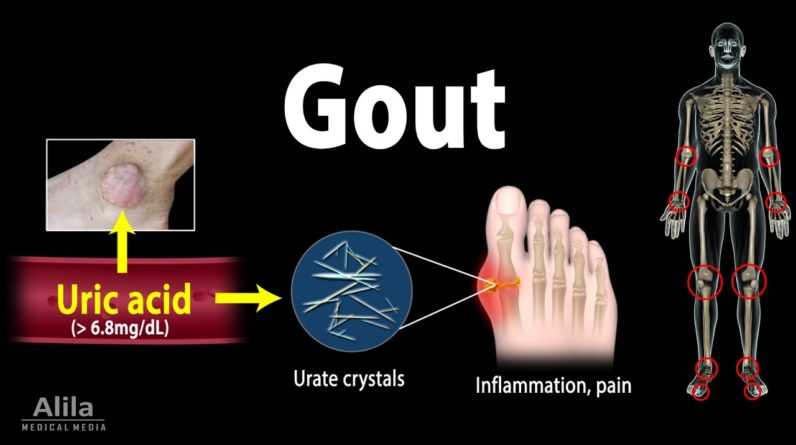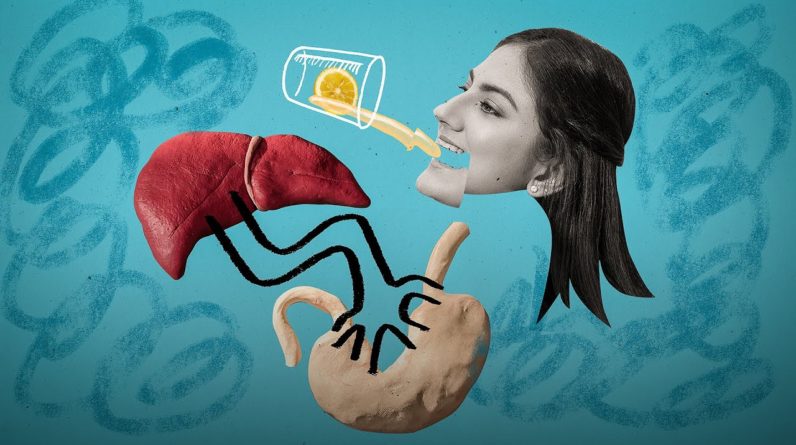
Gout is a common form of inflammatory arthritis
characterized by recurrent attacks of painful joint pain. A gout attack occurs suddenly, often at night. The affected joint is swollen, red and warm
to touch. The initial attack usually involves only one
joint, most often in the big toe, and lasts a few days. Subsequent flares may involve multiple joints
and can last for weeks, with shorter intervals of remission in between. Gout is caused by deposits of urate crystals
in the joints, which may happen when blood levels of uric acid are too high. Uric acid is a waste product from the breakdown
of purines, a major component of DNA and RNA.
Because body’s cells are constantly renewed,
uric acid is constantly produced and removed in urine. High serum urate level may result from decreased
urate excretion, increased urate production, and/or overconsumption of purines. The most common cause is the kidney’s decreased
ability to excrete uric acid, which can be hereditary, or a result of kidney diseases,
medications such as diuretics, alcohol use, or lead poisoning. Increased production of urate may occur in
conditions with abnormally high cellular turnover or cell death, or in obesity, as urate production
increases with greater body surface area. Overconsumption of purine-rich foods can contribute
to higher urate level, but is rarely the only cause. High concentration of urate promotes its precipitation
and formation of crystals in joints, causing inflammation and pain. Because uric acid crystals form more easily
in cooler temperatures, gout more often affects joints of the extremities. Urate crystals may also deposit under the
skin around the joints, forming hard lumps, called tophi, that are not usually painful
but can limit joint motions and lead to deformities. Joint damage caused by gout also increases
the risk of developing osteoarthritis. In the kidneys, urate deposits may form stones,
blocking urine flow.

Gout is more common in men. It often starts in middle age in men, and
after menopause in women. Other risk factors include diets, obesity,
other health conditions, family history, and surgery or trauma. Diagnosis requires detection of urate crystals
in synovial joint fluid. Because not all people with high serum urate
levels develop gout, a blood test alone is not sufficient for diagnosis. Acute gout attacks are treated with anti-inflammatory
drugs, such as NSAIDs, regular use of which may also help prevent or reduce frequency
of attacks. Because tophi can be dissolved by lowering
serum urate, medications that block urate production or increase urate excretion may
be used for this purpose..







